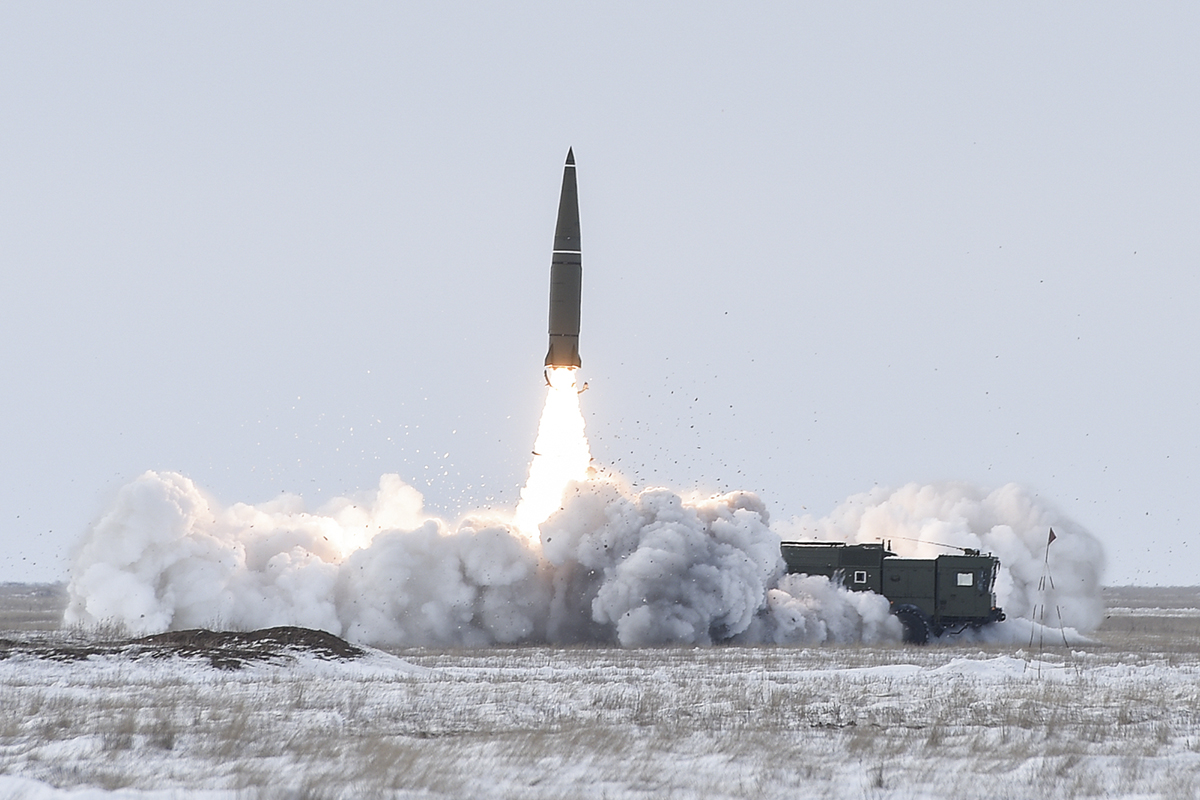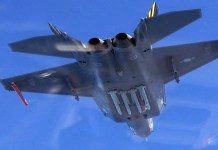Russia is reportedly poised to begin serial production of a new derivative of the Iskander-M tactical ballistic missile with a range of 1,000 km. Reports about the existence of a 1,000 km range variant of the Iskander-M first surfaced in July 2024.
On July 24, 2024, a post published on the Military Russia website announced “the existence of a medium-range ballistic missile of the universal modular missile system based on the technical solutions of the 9K720 Iskander-M OTRK.” The missile is being developed, at least since 2024, by the Machine-Building Design Bureau (Kolomna).
The post conditionally referred to the missile as the Iskander-1000, with the NATO designation SS-X-33.
There has been significant hype and denials surrounding the recent report. In the following paragraphs, we will explain the reasons behind the commotion.
Russia’s Tactical Missile Range Limitation
Russia’s tactical ballistic missile development has been significantly influenced by international arms control agreements, particularly the Intermediate-Range Nuclear Forces (INF) Treaty.
Established in 1987 between the United States and the Soviet Union, the INF Treaty prohibited the development and deployment of ground-launched ballistic and cruise missiles with ranges between 500 and 5,500 kilometers.
Consequently, Russia’s tactical missile arsenal, such as the 9K720 Iskander-M, was designed with a maximum range of 500 kilometers to comply with treaty limitations.
Ballistic missiles with a range of less than 500 km are referred to as short-range missiles, and those with a range between 500 and 5,500 kilometers are referred to as medium-range missiles.
In 2019, the United States withdrew from the INF Treaty, citing alleged Russian violations, which led to the treaty’s dissolution. This withdrawal removed the legal constraints on developing and deploying intermediate-range missiles.
Russia, however, did not immediately respond to the U.S. withdrawal from the INF Treaty, though it may have secretly initiated the low-key development of medium-range ballistic missiles.
Following several news reports that the US and NATO would deploy medium-range and short-range ballistic missiles in Europe in December 2023, the Commander-in-Chief of the Strategic Missile Forces of Russia said that, if necessary, the Russian military-industrial complex could begin production and ensure delivery to the troops of serial models of short and medium-range missiles in the shortest possible time.
On June 28, 2024, President Vladimir Putin affirmed that Russia could begin production and deployment of medium- and shorter-range missiles in response to the deployment of similar US missile systems outside their national territory.

The New Missile’s Nomenclature
Military Russia based its report on a video dedicated to the 78th anniversary of the Kapustin Yar test site on May 15, 2024. Screen grabs from the video show a missile that looks similar to the Iskander-M but features a larger and longer propellant casing but a shorter warhead.
The launcher of the new missile looks similar to the launcher of the 9K720 launcher of the Iskander-M complex. According to Military Russia, the launcher for the two systems could possibly be the same.
Roughly speaking, doubling the range of a ballistic missile would require doubling its propellant load or halving its payload. The former would result in a much larger missile with different ballistic and flight control characteristics. In other words, you would be developing a new missile, not a derivative of an existing missile.
The Iskander-M missile has a warhead that weighs between 710–800 kg. It is unlikely that the Iskander-1000 has a lighter warhead because a lighter warhead would not be effective against the types of high-value targets that the Iskander-M system is designed to attack.
(The Iskander-M features High-Explosive (HE) blast fragmentation warheads against hardened targets, such as command posts, air defense systems, and critical infrastructure, and cluster munition warheads against spread-out softer targets, such as deployed AD systems.)
It appears that Russia has doubled the range of the Iskander-1000 using a combination of technical and material advances. The missile likely features a combination of increased (10% to 15%) propellant load, an upgraded rocket motor, a more efficient propellant, and lighter materials and avionics.
It is also possible that the range of the Iskander-M had been deliberately curtailed through lower propellant charge in order to conform to INF stipulations. So, increasing the range may just have been a limited challenge!
Accuracy vs Range
As the range of a missile increases, its accuracy can be reduced due to the drift in its inertial navigation systems (INS). It’s possible to “fix” the drift periodically using satellite navigation (SATNAV). However, during missile attacks, the adversary jams SATNAV signals.
It’s likely that the Iskander-1000 features jam-resistant SATNAV and terminal guidance using radar image correlation. If so, it could possibly prove even more accurate than the Iskander-M.
The Imperative For Iskander-1000
One of the primary operational drivers behind the development of the Iskander-1000 was to extend Russia’s strike capability further into Ukrainian territory – specifically, to engage targets in Western Ukraine that were previously out of reach of the Iskander-M’s 500 km range.
Currently, several critical strategic and logistical targets, such as command centers, supply depots, and critical infrastructure, are beyond the effective range of the Iskander-M.
In the context of expanding its strike range, Russia has already deployed the Oreshnik—a medium-range hypersonic missile capable of reaching speeds up to Mach 11 and delivering multiple warheads.
However, Russia is likely using the Oreshnik as a bargaining chip in quid pro quo negotiations to limit the capabilities of the weapon systems that the U.S. and NATO supply to Ukraine.
Also, the Oreshnik is likely a very expensive missile as compared to the Iskander-1000.
Finally, repeated deployment of the Oreshnik could expose its flight characteristics, enabling the U.S. and NATO to develop countermeasures that diminish its effectiveness.
Conclusion
Ukrainian Air Force F-16s are home-based in Western Ukraine, out of the reach of Iskander-M. Perhaps at Dubno airbase in the Rovno region, West Ukraine.
It’s likely that the Mirage-2000 fighters to be transferred to Ukraine by France at the end of the current quarter will similarly operate from air bases in Western Ukraine.
Using the Iskander-1000, Russian forces would be able to strike F-16 and Mirage 2000 fighters as they return to their home base after strike missions before they enter hardened shelters.
Ukraine has dismissed the report as disinformation. Andrii Kovalenko, head of Ukraine’s Center for Countering Disinformation, refuted the claims and accused Russia of using the English-language publication to spread propaganda.
A recent report in The National Interest amplified concerns over the new Russian missile, quoting an expert who stated, “The Iskander-1000 complex is capable of effectively destroying F-16s at Ukrainian airfields and striking targets deep in the NATO rear—all from Russian territory.”
“Russia has a system that is fundamentally changing the balance of power in the region,” the expert added.
All evidence points to the Iskander-M missile being very real, even game-changing, in the context of its ability to strike targets all over Ukraine. However, the threat that it poses to NATO is mostly hype.
- Vijainder K Thakur is a retired IAF Jaguar pilot, author, software architect, entrepreneur, and military analyst.
- VIEWS PERSONAL OF THE AUTHOR
- Follow the author @vkthakur




